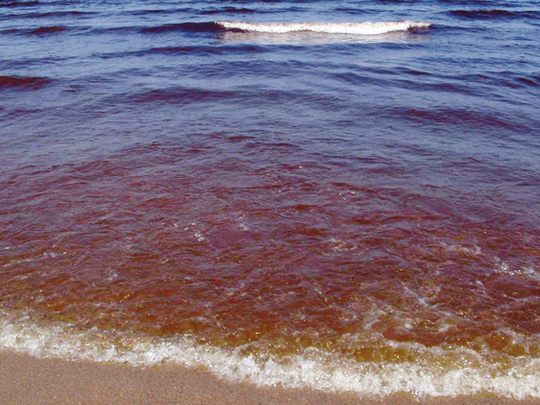
Muscat: Marine experts from Oman and the Gulf region on Monday began three days of deliberations aimed at hammering out a strategy to deal with periodic outbreaks of toxic algal blooms or red tide in Oman's coast.
The forum, under way at Sultan Qaboos University, has been organised by Oman's Ministry of Fisheries in collaboration with the Ministry of Environment and Climate Affairs.
Scientists and researchers from Iran and the Regional Organisation for Protection of the Marine Environment (ROPME) are also taking part in the seminar.
Although red tide outbreaks are a natural occurrence along the Arabian coast, Oman has been hit particularly hard by the phenomenon in recent years.
An occurrence of toxic algal blooms that first broke out in November 2008 dragged on for several months, menacing much of Oman's northern and eastern coastline during the early part of last year.
The blooms, triggered by a phytoplankton called Cochlodinium polykrikoide were responsible for incidents of fish mortality and a pervasive foul odour that drove ways swimmers and strollers from several beachfront hotspots along the coast.
All you need to know about red tide
Many popular beaches, particularly in Muscat, were temporarily fouled by copious volumes of a frothy deposit blamed on the blooms.
The phenomenon also menaced many shore-based installations that depend on seawater intake for their operations.
Following the deadly outbreak last year, authorities decided to adopt remote sensing technology to detect and monitor new occurrences along the sultanate’s lengthy coastline.
With the aid of this system, marine scientists hope to be able to forewarn shore-based installations, such as water desalination plants, refineries, LNG projects and other petrochemical industries, of an impending outbreak, thus enabling them to take preventive action.













